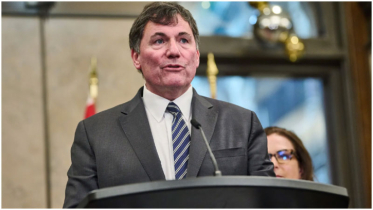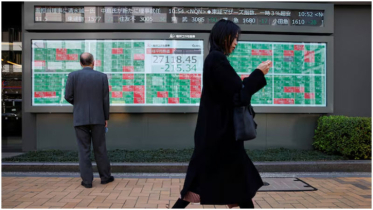US inflation falls to lowest in over 3 years

Inflation in the United States continued to cool in August, official figures showed, raising confidence that the US central bank will cut interest rates next week.
Consumer prices rose 2.5% over the 12 months to August, as prices for petrol, used cars and trucks, and some other items fell.
That marked the slowest pace since February 2021 and was down from 2.9% in July, despite an unexpected rise in housing costs.
The Labor Department figures come during a presidential campaign in which rising living costs have been a key issue.
Analysts said the data increased the likelihood that the Federal Reserve would cut interest rates by 0.25 percentage points at its meeting next week, but reduced the odds of bigger cut.
"Overall, inflation appears to have been successfully tamed but, with housing inflation still refusing to moderate as quickly as hoped, it hasn’t been completely vanquished," said Paul Ashworth, chief North America economist for Capital Economics.
The data shows price pressure is fading for key household items.
Grocery prices, which were surging just a few years ago, were unchanged from July to August and are up less than 1% from a year ago, according to the report.
The cost of petrol, another staple, has also dropped, falling over the month and more than 10% from August 2023.
However, prices for other items continued to climb.
Not including food and energy - which tend to fluctuate and can obscure underlying trends - prices were up 3.2% over the year, as airline tickets, car insurance, rent, and other housing costs grew more expensive.
"This serves as a bit of a reminder not to get too carried away with a few months of better inflation data," said Brian Coulton, Fitch Rating's chief economist.
"Certainly not enough to stop the Fed cutting rates later this month, but the stickiness of services inflation... will be one reason why the Fed will not be cutting rates at an aggressive pace over the next year or so."
Central banks, including the Fed, started upping borrowing costs two years ago in an attempt to slow inflation.
Prices began to rise globally in 2021 because of pandemic-related supply issues and a jump in government spending.
Russia's invasion of Ukraine in 2022 then caused oil prices to surge, further fuelling global inflation.
US inflation hit a high of 9.1% in June 2022, but has since fallen closer to the 2% rate considered healthy.
'They've got red tags on everything'
Jasmine Loeber, a stay-at-home mother from Pennsylvania, was so shocked by price increases in recent years that she began posting on social media about her expensive supermarket hauls.
But the 26-year-old told the BBC that prices have recently started to become more affordable.
She is still shopping strategically - avoiding certain brands and sticking with stores known for being budget friendly - but is now seeing more discounts.
"I've noticed, over the last few months, they've got red tags on everything," she said, adding that her family recently took its first holiday in three years.
But she said wider financial pressures, like housing costs, still weighed so heavily that she did not plan to have more than one child.
The latest figures went largely unremarked in the aftermath of the first debate and as political leaders marked the anniversary of the 11 September attacks on New York's world trade center.
Jasmine, who lives in a state both campaigns see as must-win in November, said she did not vote in 2020 and was unsure whether she would this year.
"It's really hard to be believe that they're actually going to be able to do anything about it," she said.
.png)




